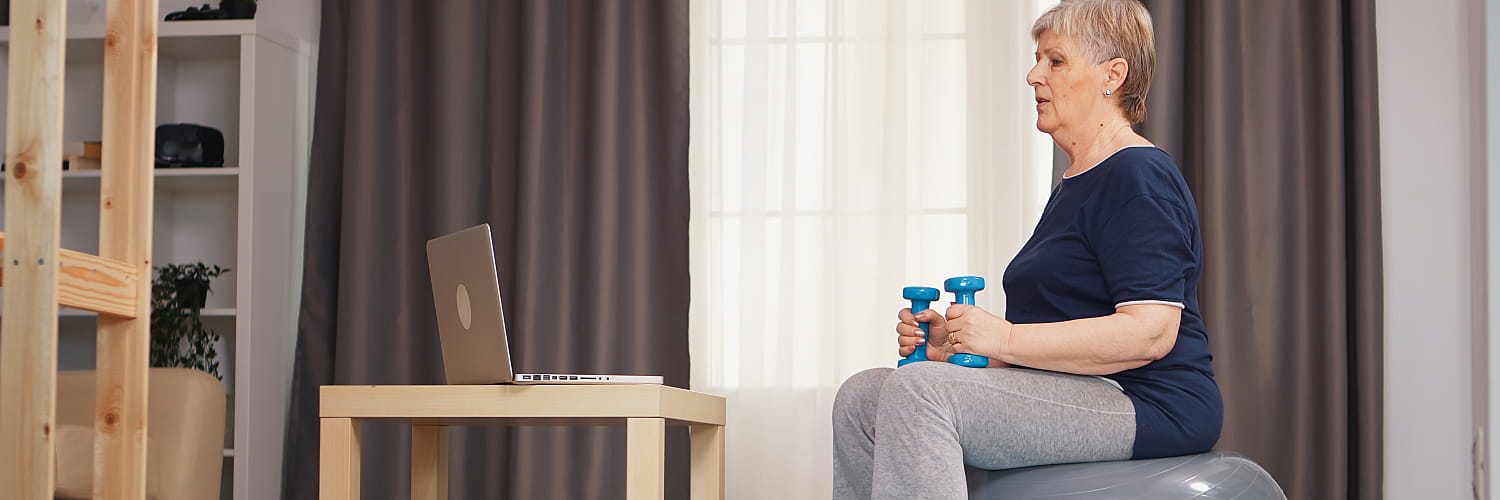Staying active in retirement is important, but it's become more difficult in the modern world. We already live in a digital world where most work and leisure are done in front of a computer or TV screen instead of on one's feet, and now the coronavirus pandemic has decreased our opportunities for social and outdoor activities. Everyone's become more sedentary — and that could be a problem for retirees.
What is a sedentary lifestyle, and why does it pose a risk to retirees? Here's what you need to know about staying active in retirement and avoiding the pitfalls of sedentary life.
What Is a Sedentary Lifestyle?
Though there is no specific medical definition for a sedentary lifestyle, doctors agree that long periods of inactivity are bad for our health. According to Johns Hopkins Medicine, "sitting for long periods [is] associated with worse health outcomes, including heart disease, Type 2 diabetes and cancer." And it's not just our physical health that's affected. Prolonged inactivity or social isolation can take a toll on our emotional and mental health, too.
Retirees are particularly vulnerable to sedentary behavior. Retirement is associated with a 10% decrease in moderate to vigorous physical activity and a 13% to 29% increase in TV watching, according to a 2018 study from the National Institute of Health.
Avoiding Sedentary Behavior
That's not to say that retirees need to be training for triathlons to avoid a sedentary lifestyle. Medical experts say the solution is much simpler than that.
Simply incorporating more activity in your daily routine can help keep you physically and mentally healthy. Harvard Health suggests that people can start by adding 30 minutes of additional activity per day, three days a week. You can break down this additional activity into five- to 10-minute chunks. Even small steps can make a big difference. Try:
- Taking a five-minute walk every two hours.
- Standing and marching in place during commercials while watching TV.
- Walking around or pacing while talking on the phone.
- Doing pushups against the wall while waiting for the oven to heat up or the microwave to finish cooking.
It can also be helpful to add additional activity to your normal day-to-day chores and errands. You walk to where you need to handle a local errand, park farther away from the entrance to a store, take the stairs instead of the elevator or wash your car by hand instead of going through the car wash.
Each tweak can add to your activity levels without completely changing your habits. Just be sure to clear any new physical activities with your doctor, add only small amounts of exercise to your routine at a time and follow any physical distancing or face mask guidelines when in public.
Though technology is part of the reason we're less active than we used to be, it can also be a good way to encourage more active behavior. Wearing a pedometer or a smartwatch can help remind you to increase your activity. Linking your device to your friends' via social media can spur some friendly competition. Not only will this help you get more active physically, but it can improve your social relationships, too.
Improving Your Well-Being
What is a sedentary lifestyle costing you in retirement? It could be affecting your health and emotional well-being. But you don't have to commit to a marathon to improve your sedentary behavior. Simply adding 30 more minutes of activity to each day can make a big difference, whether you add additional activity to your normal chores or use technology to track your movement. No matter how you add movement to your day, you're sure to reap the physical, emotional and mental benefits.


 Emily Guy Birken
Emily Guy Birken










